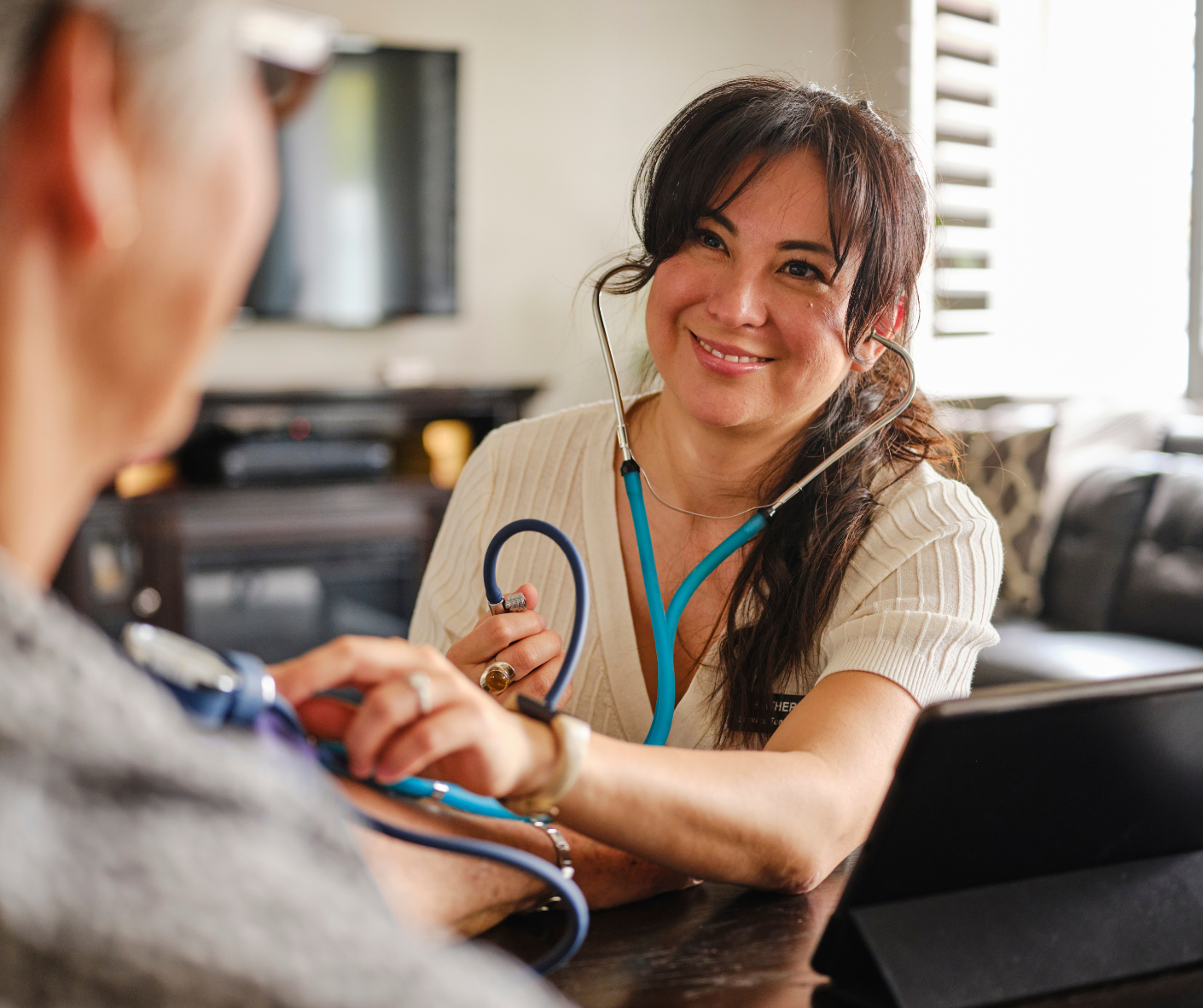15 Tips to Keep Your Lungs Healthy
Key Takeaways
- Avoid smoking and secondhand smoke to reduce your risk of lung disease and cancer. Even quitting later in life brings health benefits.
- Protect your lungs from indoor and outdoor pollutants by improving air quality at home, avoiding poor air days, and using protective gear around irritants.
- Support your lungs through healthy habits like regular physical activity, a nutrient-rich diet, staying hydrated, and practicing deep breathing.
- Stay ahead with preventive care by getting vaccinated, testing for radon, keeping up with check-ups, and monitoring changes in your breathing.
- Limit indoor burning and manage stress to prevent lung irritation and maintain a calm, steady breathing pattern throughout your day.
15 Tips to Keep Your Lungs Healthy and Breathe Better Daily
Most of us don’t think about our lungs until something feels off. But every breath you take depends on how well your lungs and the rest of your respiratory system are working. The challenge is that lung health often declines quietly—without obvious symptoms—until it becomes serious.
Many adults who are active and health-conscious are still exposed to hidden risks like air pollution, allergens, and poor indoor air quality. In fact, the CDC reports that over 25 million Americans live with asthma or chronic lung conditions.
On the bright side, there’s a lot you can still do, starting now. In this blog, you’ll find 15 simple, research-backed tips to help keep your lungs strong and breathing easy every day.
1. Breathe Easy by Quitting Smoking or Never Starting
Smoking is one of the leading causes of lung disease. Cigarettes and vapes contain chemicals, many of which are toxic to your lungs. These include formaldehyde (used in embalming fluid), benzene (found in gasoline), ammonia (a household cleaner), and arsenic (a poison). Many of these chemicals damage the lining of your lungs and airways, causing inflammation and scarring.
Over time, this can lead to chronic bronchitis, emphysema, or even lung cancer. Even if you’ve smoked for years, quitting now can still improve your lung function. Within a few days of quitting, your lungs begin to heal as your body clears out some of the toxins.
If you’ve never smoked, that’s a good decision for your lungs. Avoiding nicotine from the start helps your respiratory system stay stronger for longer.
2. Avoid Secondhand Smoke and Pollution
Secondhand smoke and air pollution can be just as harmful as smoking. Breathing in smoke, exhaust, or fine particles in the air can cause inflammation in your lungs. Over time, this may lead to asthma or other chronic breathing problems.
Try to avoid spending time near people who smoke or in areas with poor air quality. Check your local air quality using resources like AirNow.gov. On days when air pollution is high, it's best to stay indoors and keep windows closed. If you have to be outside, try to stay away from busy roads and construction sites.
3. Create a Breathable Home with Better Indoor Air Quality
You spend a lot of time indoors, and the air in your home matters. Dust, mold, cleaning chemicals, and smoke can make it harder for your lungs to work well.
To keep indoor air clean, ventilate your space often by opening windows when the air outside is safe. Use a HEPA air purifier, especially if you have pets or allergies. Avoid using strong cleaning sprays or air fresheners. Choose unscented, natural products when possible. Also, don’t allow smoking inside your home.
Simple steps like these can help lower your risk of breathing problems and support your lung health over time.
4. Eat a Healthy Diet
Our lungs work differently depending on what we eat. A diet high in fruits, vegetables, whole grains, and lean proteins gives your body the nutrients it needs to stay strong. Foods rich in antioxidants, like berries, leafy greens, and nuts can help reduce inflammation in the lungs.
Some research suggests that a diet rich in vitamins C and E may support better lung function. Try to avoid processed foods and too much salt, which can cause water retention and make breathing harder.
5. Drink More Water
Your lungs have a thin layer of mucus that helps trap germs and dust. Drinking water helps keep this layer thin, so your lungs can clean themselves more easily.
When you're dehydrated, the mucus becomes thick and sticky. This can make it harder to breathe and easier for germs to grow. Staying well-hydrated supports healthy airways and can even help prevent infections like the common cold or flu.
Aim for about 6 to 8 glasses of water each day. If you're active or live in a dry climate, you may need a bit more to stay hydrated.
6. Be Physically Active
Exercise helps your lungs work better. When you move your body, your breathing gets faster. This gives your lungs a workout. Over time, your respiratory muscles get stronger, and your lungs become more efficient at moving oxygen through your body.
Even simple activities like walking, biking, or swimming can make a difference. Aim for at least 30 minutes of movement on most days. If you’re new to exercise, talk to your healthcare provider to find what’s safe for you.
7. Keep Current with Preventive Care
Respiratory infections like the flu, pneumonia, COVID-19, and RSV (Respiratory Syncytial Virus) can damage your lungs. RSV is a common virus that spreads through coughs, sneezes, or close contact. While many people recover with mild symptoms, RSV can cause serious lung infections, like bronchiolitis (inflammation of the small airways) and pneumonia, making it harder for the lungs to move air and oxygen properly.
For many people, staying up to date on recommended vaccines is an effective way to help prevent serious respiratory infections. Vaccines help your body build immunity so you can fight off infections before they become serious.
Flu shots are highly recommended every year, along with pneumonia vaccines for older adults or people with chronic conditions.
Staying up to date on your vaccines helps reduce hospital visits, breathing trouble, and long-term lung damage.
To find vaccine resources near you, visit Vaccines.gov, a tool provided by the U.S. Department of Health and Human Services.
Disclaimer: At Balanced Healthcare, we support evidence-based recommendations provided by the CDC while also honoring patient autonomy and individual choice. We encourage open conversations with your provider to determine what’s right for you.
8. Don’t Skip Regular Health Check-Ups
Some lung conditions, like asthma or COPD(chronic obstructive pulmonary disease), can develop slowly and may not cause symptoms at first. Regular check-ups help identify these issues early, when they’re easier to treat and manage. During a visit, your provider may listen to your lungs, check your oxygen levels, and ask questions about your breathing patterns or any changes you’ve noticed.
If traditional annual visits feel too expensive or difficult to schedule, you might consider more accessible care models like Direct Primary Care (DPC). In DPC, patients often pay a flat monthly fee for unlimited visits and better access to their provider. This kind of ongoing relationship makes it easier to track lung health over time and catch concerns before they become serious.
9. Practice Deep Breathing to Boost Lung Function
Most people breathe without thinking about it, often taking quick, shallow breaths. Over time, this can limit how well the lungs expand and move air. According to Harvard Health, practicing slow, controlled breathing can help regulate the body’s stress response and improve overall function.
Deep breathing gently stretches the lungs, improves airflow, and increases the amount of oxygen your body takes in. It also helps calm the nervous system, which can ease tension that makes breathing feel harder.
Try this simple method: Breathe in through your nose for four seconds, hold for a count of four, then breathe out slowly through your mouth. Repeat a few times each day. Over time, deep breathing can support stronger, healthier lungs.
10. Keep Your Hands Clean to Prevent Infections
Many lung infections start when viruses or bacteria enter your body through your hands. Keeping your hands clean is a simple but powerful way to lower your risk of respiratory illness.
Wash your hands with soap and water for at least 20 seconds, especially after being in public places or touching your face. If soap isn’t available, use hand sanitizer with at least 60% alcohol.
Good hand hygiene helps reduce the likelihood of respiratory infections like the common cold and flu, all of which can make it harder to breathe or lead to serious lung problems.
11. Test for Radon to Make Your Home Safer
Radon is a natural gas you can't see, smell, or taste, but long-term exposure can damage your lungs and increase your risk of lung cancer. It comes from the ground and can enter your home through cracks in floors or walls. In fact, radon is the second leading cause of lung cancer in the U.S., after smoking.
Testing for radon is simple and inexpensive. You can buy radon test kits online or at most hardware stores. To use the kit, follow the instructions and mail it to the lab listed. If the results show high levels of radon, contact a certified mitigation specialist to reduce it. Keeping radon levels low helps safeguard your respiratory health over time.
12. Wear Protective Gear Around Dust or Fumes
If you work in a place with dust, smoke, or chemicals, you may be breathing in things that can irritate or harm your lungs. This includes construction sites, cleaning jobs, or certain factory work. Repeated exposure over time can lead to chronic lung diseases like asthma or occupational lung conditions.
Wearing the right protective gear, such as a mask or respirator can help limit what you breathe in. Make sure your equipment fits well and is designed for the job you're doing. At home, you can also wear a mask while cleaning or working with strong products.
13. Pay Attention to Changes in Your Breathing
Your lungs often give you early signs when something is wrong. A cough that doesn’t go away, shortness of breath, wheezing, or chest tightness may all point to a problem. These signs could be caused by asthma, an infection, or even early-stage chronic lung disease.
Don’t wait until symptoms get worse. Talk to your healthcare provider if you notice anything unusual. We encourage you to reach out to a healthcare provider as soon as something feels off, because early care makes a big difference.
Listening to your body is an important part of staying well.
14. Avoid Burning Wood or Trash Indoors
Burning wood, charcoal, or trash releases fine particles and gases that can harm your lungs. These pollutants irritate the airways and can worsen breathing conditions like asthma or COPD. Wood smoke contains many of the same toxic chemicals found in tobacco smoke, including carbon monoxide, formaldehyde, benzene, and polycyclic aromatic hydrocarbons (PAHs). These substances can damage lung tissue and increase the risk of chronic respiratory problems.
To reduce exposure, use fireplaces and wood stoves that are properly ventilated and burn only clean, dry wood. Never burn trash, plastic, or treated wood indoors, as they release even more harmful toxins. Improving ventilation and using air filters can also help keep indoor air safer to breathe.
15. Support Lung Health by Managing Stress
Your lungs and nervous system are closely connected. When you're stressed, your breathing becomes shallow and fast. This can reduce the amount of oxygen your body gets and make you feel more anxious. Over time, high stress levels may worsen symptoms in people with asthma or other lung conditions.
Simple stress-reducing habits, like stretching, journaling, or going for a short walk can help support steady breathing and keep your lungs relaxed. Practicing calm, slow breathing each day can improve how your lungs and body respond to stress.
Final Thoughts
Keeping your lungs healthy is about making consistent, everyday choices that protect and support your respiratory system. Avoiding smoke and pollutants, staying active, eating a balanced diet, staying hydrated, and practicing deep breathing all help your lungs function at their best. Regular check-ups and staying current with vaccines also lower your risk of serious illness and long-term damage.
If you're ready to take action, start with just one change from this list and build from there. Small steps, like improving your indoor air or drinking more water can lead to real improvements in how you breathe and feel each day. Your lungs work for you every moment; it’s worth investing in habits that help them work well for life.


